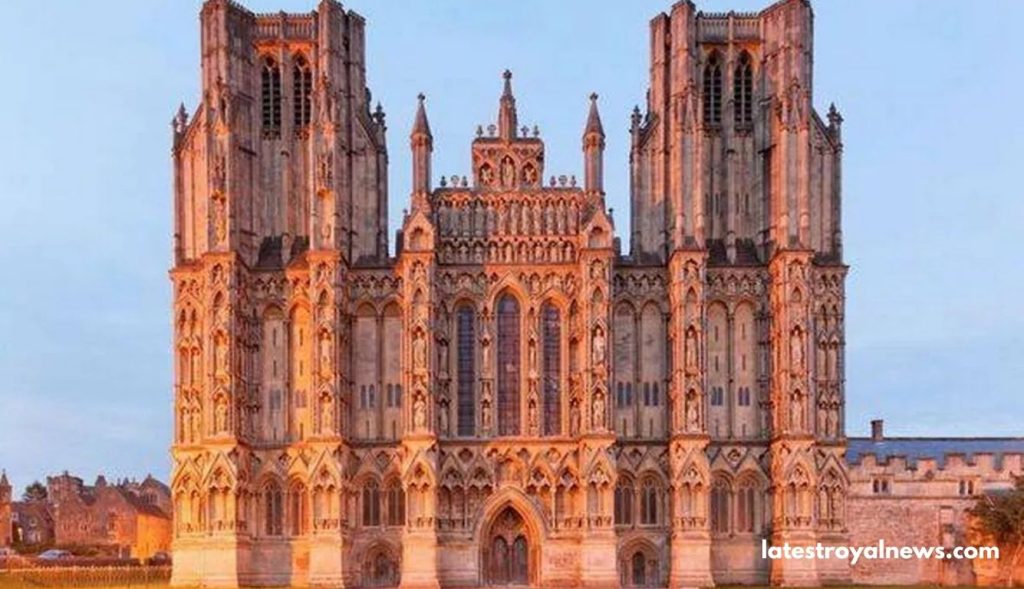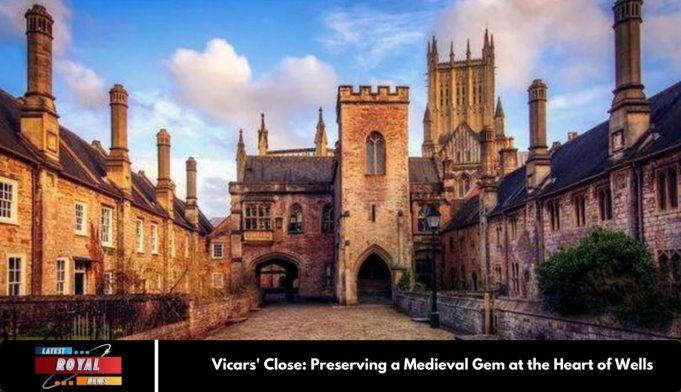Vicars’ Close, nestled in the heart of Wells, Somerset, is a remarkable testament to England’s medieval heritage. Often hailed as the UK’s “most historic street,” it is home to a series of stunning medieval terraced houses that have stood the test of time, nestled next to the iconic Wells Cathedral. This unique location offers a rare glimpse into medieval urban planning and the centuries-old traditions of the cathedral’s choir.
However, despite its historical significance, Vicars’ Close is facing serious structural challenges that threaten its preservation. From leaking roofs to outdated drainage systems, the street requires urgent restoration work to prevent further damage. This article delves into the history, cultural value, and ongoing efforts to restore Vicars’ Close, highlighting the importance of collective action in preserving this iconic part of England’s architectural heritage.
A Glimpse Into History
Origins of Vicars’ Close
Constructed in 1348, Vicars’ Close was designed to house the choir’s vicars—the altos, tenors, and basses who sang at Wells Cathedral. This architectural marvel shielded its residents from worldly temptations and fostered a life of devotion and discipline. In 1459, a bridge was added, connecting the houses to the cathedral and ensuring the choristers could travel without interacting with the general populace. This bridge and the houses’ distinct medieval design have made Vicars’ Close a significant historical landmark.
The Unique Architecture
The terraced houses, made from local stone, feature steeply pitched roofs, intricate joinery, and period-appropriate window designs. These Grade-1 listed buildings have retained much of their original character, making them a rare and invaluable representation of medieval urban planning in England. However, maintaining their structural integrity requires specialized restoration efforts.
The Current State of Vicars’ Close
Structural Challenges
Despite its historical grandeur, Vicars’ Close faces numerous challenges. Residents have reported issues such as:
- Heat Loss: The medieval windows lack proper insulation, leading to significant heat loss.
- Leaking Roofs: Deteriorated roofing materials have led to leaks, threatening the interiors.
- Failing Drainage Systems: Outdated drainage infrastructure struggles to manage water efficiently, exacerbating damage.

Resident’s Concerns
Matthew Minter, a resident of Vicars’ Close and a choir singer at Wells Cathedral, expressed his concerns about the declining condition of the houses. He highlighted the privilege of living in such a unique place but underscored the pressing need for renovations to preserve the street’s legacy.
Preservation Efforts
Fundraising Initiatives
Wells Cathedral has taken significant steps to address the deteriorating condition of Vicars’ Close. Key fundraising milestones include:
- National Lottery Heritage Fund Grant: A substantial £4.4m grant was secured to kickstart restoration efforts.
- Additional Contributions: Other contributors raised a further £1.9m, reflecting widespread support for the project.
Restoration Plans
The cathedral’s comprehensive restoration strategy includes:
- Re-Roofing: Replacing failing roofs to prevent leaks and enhance durability.
- Insulation Upgrades: Adding modern insulation materials to improve energy efficiency while preserving the historic character.
- Improved Drainage: Overhauling drainage systems to prevent water-related damage.
- Wall Conservation and Joinery Repairs: Addressing structural issues with walls and intricate woodwork to maintain authenticity.
Enhancing Public Access
Beyond preservation, the cathedral aims to make Vicars’ Close more accessible to the public. Plans include opening two houses as a visitor center to celebrate the street’s history and significance. This initiative will not only foster appreciation for the site but also generate additional funding opportunities.
The Stakes of Inaction
Potential Relocation of Choir Singers
Dean Toby Wright of Wells Cathedral emphasized the critical stakes of inaction. The failure to restore Vicars’ Close could force choir singers to relocate, disrupting the centuries-old tradition of housing the choir within the cathedral’s grounds.
Loss of Heritage
Without urgent intervention, the structural issues plaguing Vicars’ Close could cause irreversible damage. Losing this treasure would erase a vital chapter of England’s architectural and cultural history.
You may also like:
Meghan Markle’s Big Announcement: New Video Teases Exciting Upcoming Project
Meghan Markle Shines with Joy as She Celebrates Netflix Show with Jamie Kern Lima
The Importance of Preservation
Cultural and Historical Value
Vicars’ Close is not merely a collection of buildings; it’s a living monument that embodies centuries of tradition and artistry. Its preservation ensures that future generations can experience and learn from this extraordinary piece of history.
Economic Benefits
Restoring Vicars’ Close has the potential to boost local tourism. Enhanced public access and visitor centers can attract history enthusiasts, contributing to Somerset’s economy and fostering community pride.
Community Efforts and Hope
Local Support
Somerset’s residents and locals have rallied around the preservation efforts, contributing to fundraising campaigns and raising awareness about the street’s plight. Their dedication underscores the collective determination to save this historic site.
Looking Ahead
With significant funds already raised, the restoration project is well underway. However, the cathedral’s £7m target highlights the need for continued support. Donations, partnerships, and public awareness will be pivotal in ensuring the success of this endeavor.
How You Can Help
- Donate: Contribute to Wells Cathedral’s restoration fund.
- Visit: Explore Vicars’ Close and support local tourism.
- Spread Awareness: Share the story of Vicars’ Close to inspire others to take action.
Every effort counts in ensuring this iconic street remains a cherished part of England’s history.
Frequently Asked Questions
What is Vicars’ Close?
Vicars’ Close is a historic street in Wells, Somerset, renowned for being the most historic street in the UK. It dates back to 1348 and was originally built to house the choir’s vicars who sang at Wells Cathedral.
Why is Vicars’ Close significant?
Vicars’ Close is one of the best-preserved examples of medieval urban planning in England. Its architectural features and connection to Wells Cathedral make it a cultural and historical landmark.
What are the main challenges facing Vicars’ Close today?
The street faces several issues, including heat loss through old windows, leaking roofs, and outdated drainage systems. These problems threaten the integrity of the buildings and need urgent attention.
What efforts are being made to restore Vicars’ Close?
Wells Cathedral has secured a £4.4 million grant from the National Lottery Heritage Fund, along with additional contributions, to restore the buildings. The restoration plans include re-roofing, improving insulation, upgrading drainage, and preserving the intricate joinery.
How can I support the restoration of Vicars’ Close?
You can contribute to the restoration fund by donating, visiting Vicars’ Close to support local tourism, or spreading awareness about the importance of preserving this historic site.
Can I visit Vicars’ Close?
Yes, Vicars’ Close is open to the public. Future plans include opening two of the houses as a visitor center to showcase its history and further encourage public engagement.
What will happen if Vicars’ Close is not restored?
If the necessary restoration work is not done, the buildings could suffer irreversible damage, and the choir singers may need to relocate, disrupting a centuries-old tradition.
What is the architectural style of Vicars’ Close?
The houses in Vicars’ Close feature steeply pitched roofs, intricate wooden joinery, and period-specific window designs, all made from local stone, making it a rare and valuable example of medieval architecture.
Conclusion
Vicars’ Close is a beacon of England’s rich medieval heritage, standing as a testament to the ingenuity and artistry of the past. However, its future hangs in the balance. Preserving this “most historic street” requires a collective effort to secure the necessary funds and undertake critical restoration work. By investing in Vicars’ Close, we not only safeguard a priceless piece of history but also honor the traditions and stories it represents for generations to come.








